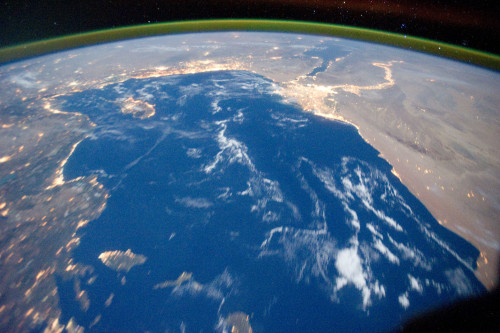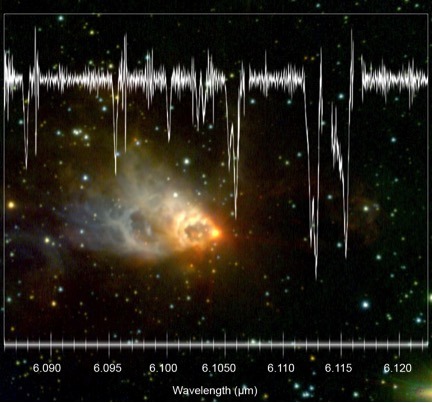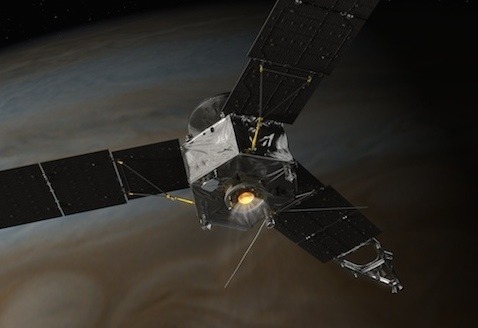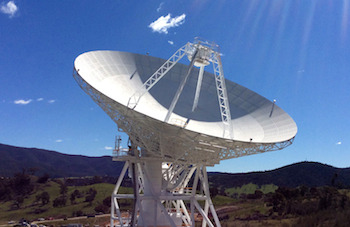“Only In The Darkness Can You See The Stars.” —Martin Luther King, Jr. Pause For A Moment And

“Only in the darkness can you see the stars.” —Martin Luther King, Jr. Pause for a moment and take in the vastness and beauty of our home planet captured from the vantage point of space. On this spaceship we call Earth, we are all in this together. 💙
Make sure to follow us on Tumblr for your regular dose of space: http://nasa.tumblr.com.
More Posts from Nasa and Others
In a Warming World, NASA’s Eyes Offer Crucial Views of Hurricanes
June 1 marks the start of hurricane season in the Atlantic Ocean. Last year’s hurricane season saw a record-setting 30 named storms. Twelve made landfall in the United States, also a record. From space, NASA has unique views of hurricanes and works with other government agencies -- like the National Oceanographic and Atmospheric Administration (NOAA) -- to better understand individual storms and entire hurricane seasons.

Here, five ways NASA is changing hurricane science:
1. We can see storms from space
From space, we can see so much more than what’s visible to the naked eye. Among our missions, NASA and NOAA have joint satellite missions monitoring storms in natural color -- basically, what our eyes see -- as well as in other wavelengths of light, which can help identify features our eyes can’t on their own. For instance, images taken in infrared can show the temperatures of clouds, as well as allow us to track the movement of storms at night.

2. We can see inside hurricanes in 3D
If you’ve ever had a CT scan or X-ray done, you know how important 3D imagery can be to understanding what’s happening on the inside. The same concept applies to hurricanes. Our Global Precipitation Measurement mission’s radar and microwave instruments can see through storm clouds to see the precipitation structure of the storm and measure how much total rain is falling as a result of the storm. This information helps scientists understand how the storm may change over time and understand the risk of severe flooding.
We can even virtually fly through hurricanes!

3. We’re looking at how climate change affects hurricane behavior
Climate change is likely causing storms to behave differently. One change is in how storms intensify: More storms are increasing in strength quickly, a process called rapid intensification, where hurricane wind speeds increase by 35 mph (or more) in just 24 hours.
In 2020, a record-tying nine storms rapidly intensified. These quick changes in storm strength can leave communities in their path without time to properly prepare.
Researchers developed a machine learning model that could more accurately detect rapidly intensifying storms.

It’s not just about how quickly hurricanes gain strength. We’re also looking at how climate change may be causing storms to move more slowly, which makes them more destructive. These “stalled” storms can slow to just a few miles an hour, dumping rain and damaging winds on one location at a time. Hurricane Dorian, for example, stalled over Grand Bahama and left catastrophic damage in its wake. Hurricanes Harvey and Florence experienced stalling as well, both causing major flooding.

4. We can monitor damage done by hurricanes
Hurricane Maria reshaped Puerto Rico’s forests. The storm destroyed so many large trees that the overall height of the island’s forests was shortened by one-third. Measurements from the ground, the air, and space gave researchers insights into which trees were more susceptible to wind damage.

Months after Hurricane Maria, parts of Puerto Rico still didn’t have power. Using satellite data, researchers mapped which neighborhoods were still dark and analyzed demographics and physical attributes of the areas with the longest wait for power.

5. We help communities prepare for storms and respond to their aftermath
The data we collect is available for free to the public. We also partner with other federal agencies, like the Federal Emergency Management Agency (FEMA), and regional and local governments to help prepare for and understand the impacts of disasters like hurricanes.
In 2020, our Disasters Program provided data to groups in Alabama, Louisiana, and Central America to identify regions significantly affected by hurricanes. This helps identify vulnerable communities and make informed decisions about where to send resources.

The 2021 Atlantic hurricane season starts today, June 1. Our colleagues at NOAA are predicting another active season, with an above average number of named storms. At NASA, we’re developing new technology to study how storms form and behave, including ways to understand Earth as a system. Working together with our partners at NOAA, FEMA and elsewhere, we’re ready to help communities weather another year of storms.
Bonus: We see storms on other planets, too!
Earth isn’t the only planet with storms. From dust storms on Mars to rains made of glass, we study storms and severe weather on planets in our solar system and beyond. Even the Sun has storms. Jupiter’s Great Red Spot, for instance, is a hurricane-like storm larger than the entire Earth.

Make sure to follow us on Tumblr for your regular dose of space: http://nasa.tumblr.com.
The return of the Dragon 🐉
One month ago, SpaceX’s Dragon capsule arrived at the International Space Station. Now it’s time for the Dragon to come home. The return trip, a crucial part of its mission, brings scientific hardware, data and experiments down to waiting researchers.
Check out a few of the pieces of research taking that ride back to Earth.

A cinematic look at life and science aboard the space station
You may one day get to experience the product of The ISS Experience. A team is creating a cinematic virtual reality (VR) film from footage taken during in space covering crew life, execution of science and the international partnerships involved on the space station.

Every week or so, footage is transferred from the camera onto solid state drives – an original and a backup – for storage and downlinking. One of each pair of drives returns to Earth for editing and production.
Seeking Alzheimer’s understanding in microgravity
Amyloid fibrils, a conglomeration of proteins that can build up in the body, are associated with a number of neurodegenerative diseases such as Alzheimer’s and Parkinson’s diseases. The Amyloid Aggregation investigation assesses whether microgravity affects formation of these fibrils.

Samples exposed to microgravity are coming back to Earth using a facility that maintains a chilly temperature of -20°C. Teams on the ground must quickly retrieve the equipment and keep the samples at -20°C until they are analyzed.
The SPHERES return home
Synchronized Position Hold, Engage, Reorient, Experimental Satellites, or SPHERES, are bowling-ball sized satellites used to study formation flying, control algorithms and material science.

First sent to the station in 2006, these satellites have been employed in a dozen different investigations.

The Dragon brings back hardware from two recent experiments that examined the behavior of fluids in microgravity, SPHERES Tether Slosh and SPHERES-Slosh.
From microgravity lab to manufacturing facility
The Fiber Optic Production investigation created optical fibers on the space station using a blend of materials called ZBLAN to see whether making the fibers in microgravity has advantages over the process used on Earth. ZBLAN optical fibers offer high bandwidth for the telecommunications industry, and potential applications for uses like laser surgery and environmental monitoring.

The fiber produced on the space station is coming to Earth for testing to help verify previous studies and guide future efforts to manufacture large volumes of such fiber in microgravity.
Read more about the science returning on Dragon here!
For daily updates, follow @ISS_Research, Space Station Research and Technology News or our Facebook. Follow the ISS National Lab for information on its sponsored investigations. For opportunities to see the space station pass over your town, check out Spot the Station.
Make sure to follow us on Tumblr for your regular dose of space: http://nasa.tumblr.com.
Ever get a random craving for a food when in space?
A Wrinkle in Space-Time: The Eclipse That “Proved” Einstein Right
One hundred years ago a total solar eclipse turned an obscure scientist into a household name. You might have heard of him — his name is Albert Einstein. But how did a solar eclipse propel him to fame?
First, it would be good to know a couple things about general relativity. (Wait, don’t go! We’ll keep this to the basics!)

A decade before he finished general relativity, Einstein published his special theory of relativity, which demonstrates how space and time are interwoven as a single structure he dubbed “space-time.” General relativity extended the foundation of special relativity to include gravity. Einstein realized that gravitational fields can be understood as bends and curves in space-time that affect the motions of objects including stars, planets — and even light.
For everyday situations the centuries-old description of gravity by Isaac Newton does just fine. However, general relativity must be accounted for when we study places with strong gravity, like black holes or neutron stars, or when we need very precise measurements, like pinpointing a position on Earth to within a few feet. That makes it hard to test!

A prediction of general relativity is that light passing by an object feels a slight "tug", causing the light's path to bend slightly. The more mass the object has, the more the light will be deflected. This sets up one of the tests that Einstein suggested — measuring how starlight bends around the Sun, the strongest source of gravity in our neighborhood. Starlight that passes near the edge of the Sun on its way to Earth is deflected, altering by a small amount where those stars appear to be. How much? By about the width of a dime if you saw it at a mile and a quarter away! But how can you observe faint stars near the brilliant Sun? During a total solar eclipse!

That’s where the May 29, 1919, total solar eclipse comes in. Two teams were dispatched to locations in the path of totality — the places on Earth where the Moon will appear to completely cover the face of the Sun during an eclipse. One team went to South America and another to Africa.
On eclipse day, the sky vexed both teams, with rain in Africa and clouds in South America. The teams had only mere minutes of totality during which to take their photographs, or they would lose the opportunity until the next total solar eclipse in 1921! However, the weather cleared at both sites long enough for the teams to take images of the stars during totality.

The teams took two sets of photographs of the same patch of sky – one set during the eclipse and another set a few months before or after, when the Sun was out of the way. By comparing these two sets of photographs, researchers could see if the apparent star positions changed as predicted by Einstein. This is shown with the effect exaggerated in the image above.
A few months after the eclipse, when the teams sorted out their measurements, the results demonstrated that general relativity correctly predicted the positions of the stars. Newspapers across the globe announced that the controversial theory was proven (even though that’s not quite how science works). It was this success that propelled Einstein into the public eye.

The solar eclipse wasn’t the first test of general relativity. For more than two centuries, astronomers had known that Mercury’s orbit was a little off. Its perihelion — the point during its orbit when it is closest to the Sun — was changing faster than Newton’s laws predicted. General relativity easily explains it, though, because Mercury is so close to the Sun that its orbit is affected by the Sun’s dent in space-time, causing the discrepancy.
In fact, we still test general relativity today under different conditions and in different situations to see whether or not it holds up. So far, it has passed every test we’ve thrown at it.
Curious to know where we need general relativity to understand objects in space? Tune into our Tumblr tomorrow to find out!

You can also read more about how our understanding of the universe has changed during the past 100 years, from Einstein's formulation of gravity through the discovery of dark energy in our Cosmic Times newspaper series.
Make sure to follow us on Tumblr for your regular dose of space: http://nasa.tumblr.com.
What did you major in? What was your college experience?
What is the scariest part of your job?
I love my job, and I think the scariest thing for me is making a mistake. So I work hard to learn everything I can to avoid making mistakes and be as methodical as I can to avoid that.
Ten Observations From Our Flying Telescope

SOFIA is a Boeing 747SP aircraft with a 100-inch telescope used to study the solar system and beyond by observing infrared light that can’t reach Earth’s surface.

What is infrared light? It’s light we cannot see with our eyes that is just beyond the red portion of visible light we see in a rainbow. It can be used to change your TV channels, which is how remote controls work, and it can tell us how hot things are.

Everything emits infrared radiation, even really cold objects like ice and newly forming stars! We use infrared light to study the life cycle of stars, the area around black holes, and to analyze the chemical fingerprints of complex molecules in space and in the atmospheres of other planets – including Pluto and Mars.

Above, is the highest-resolution image of the ring of dust and clouds around the back hole at the center of our Milky Way Galaxy. The bright Y-shaped feature is believed to be material falling from the ring into the black hole – which is located where the arms of the Y intersect.

The magnetic field in the galaxy M82 (pictured above) aligns with the dramatic flow of material driven by a burst of star formation. This is helping us learn how star formation shapes magnetic fields of an entire galaxy.

A nearby planetary system around the star Epsilon Eridani, the location of the fictional Babylon 5 space station, is similar to our own: it’s the closest known planetary system around a star like our sun and it also has an asteroid belt adjacent to the orbit of its largest, Jupiter-sized planet.

Observations of a supernova that exploded 10,000 years ago, that revealed it contains enough dust to make 7,000 Earth-sized planets!

Measurements of Pluto’s upper atmosphere, made just two weeks before our New Horizons spacecraft’s Pluto flyby. Combining these observations with those from the spacecraft are helping us understand the dwarf planet’s atmosphere.

A gluttonous star that has eaten the equivalent of 18 Jupiters in the last 80 years, which may change the theory of how stars and planets form.

Molecules like those in your burnt breakfast toast may offer clues to the building blocks of life. Scientists hypothesize that the growth of complex organic molecules like these is one of the steps leading to the emergence of life.

This map of carbon molecules in Orion’s Horsehead nebula (overlaid on an image of the nebula from the Palomar Sky Survey) is helping us understand how the earliest generations of stars formed. Our instruments on SOFIA use 14 detectors simultaneously, letting us make this map faster than ever before!

Pinpointing the location of water vapor in a newly forming star with groundbreaking precision. This is expanding our understanding of the distribution of water in the universe and its eventual incorporation into planets. The water vapor data from SOFIA is shown above laid over an image from the Gemini Observatory.

We captured the chemical fingerprints that revealed celestial clouds collapsing to form young stars like our sun. It’s very rare to directly observe this collapse in motion because it happens so quickly. One of the places where the collapse was observed is shown in this image from The Two Micron All Sky Survey.
Learn more by following SOFIA on Facebook, Twitter and Instagram.
Make sure to follow us on Tumblr for your regular dose of space: http://nasa.tumblr.com
NASA’s 60th Anniversary: What’s Out There
In the past 60 years, we’ve advanced our understanding of our solar system and beyond. We continually ask “What’s out there?” as we advance humankind and send spacecraft to explore. Since opening for business on Oct. 1, 1958, our history tells a story of exploration, innovation and discoveries. The next 60 years, that story continues. Learn more: https://www.nasa.gov/60
Make sure to follow us on Tumblr for your regular dose of space: http://nasa.tumblr.com.
Solar System: Things to Know This Week
Our solar system is huge, so let us break it down for you. Here are a few things you should know this week:
1. Science at the Edge

As the New Horizons spacecraft speeds away at more than 31,000 miles per hour (14 km/s) it continues to explore the Kuiper Belt, the region of icy bodies beyond Neptune. New Horizons has now twice observed 1994 JR1, a 90-mile-wide object orbiting more than 3 billion miles from the sun.
2. A Spaceship, Refined

This artist’s rendering shows our Europa mission spacecraft, which is being developed for a launch sometime in the 2020s. The mission will place a spacecraft in orbit around Jupiter to explore the giant planet’s moon Europa. This updated concept image shows tow large solar arrays extending from the sides of the spacecraft, to which the mission’s ice-penetrating radar antennas are attached. A saucer-shaped high-gain antenna is also side mounted with a magnetometer boom placed next to it. Find out more about the spacecraft HERE.
3. Sojourn at Saturn

The Cassini spacecraft is hard at work this week, orbiting Saturn to study the planet and its rings. The recent pictures are spectacular, take a look at them HERE.
4. Talking Juno

Our Juno mission arrives at Jupiter on July 4, and that presents a unique opportunity for educators, science communicators and anyone interested in space exploration. We are providing a growing set of Juno-related information resources. Take a look at them HERE.
5. Now THAT’S a Long Distance Call

How do explorers on Earth talk to astronauts and robotic spacecraft flung across the far reaches of space? They use the remarkable technology deployed by our Space Communications and Navigation (SCaN) Program Office. This month, SCaN is celebrating its 10th anniversary of managing the ultimate network. Find out how it works HERE.
Want to learn more? Read our full list of the 10 things to know this week about the solar system HERE.
Make sure to follow us on Tumblr for your regular dose of space: http://nasa.tumblr.com
What’s Up for February 2016?
Five morning planets, Comet Catalina passes Polaris and icy Uranus and icy Vesta meet near Valentine’s Day.

February mornings (until Feb. 20) feature Mercury, Venus, Saturn, Mars and Jupiter. The last time this five-planet dawn lineup happened was in 2005. The planets are easy to distinguish when you use the moon as your guide. Details on viewing HERE.
If you miss all five planets this month, you’ll be able to see them again in August’s sunset sky.

Last month, Comet Catalina’s curved dust tail and straight ion tail were visible in binoculars and telescopes near two galaxies that are close to the handle of the Big Dipper. Early this month, the comet nears Polaris, the North Star. It should be visible all month long for northern hemisphere observers.

There will be more opportunities to photograph Comet Catalina paired with other objects this month. It passes the faint spiral galaxy IC 342 and a pretty planetary nebula named NGC 1501 between Feb. 10 – 29. For binocular viewers, the magnitude 6 comet pairs up with a pretty string of stars, known as Kemble’s Cascade, on Feb. 24.

Finally, through binoculars, you should be able to pick out Vesta and Uranus near one another this month. You can use the moon as a guide on Feb. 12, and the cornerstone and the corner stars of Pegasus all month long.

For more information about What’s Up in the February sky, watch our monthly video HERE.
Make sure to follow us on Tumblr for your regular dose of space: http://nasa.tumblr.com
-
 crystalgemzine liked this · 1 year ago
crystalgemzine liked this · 1 year ago -
 finest-doings liked this · 2 years ago
finest-doings liked this · 2 years ago -
 ignakiexpression liked this · 2 years ago
ignakiexpression liked this · 2 years ago -
 underlook2 liked this · 2 years ago
underlook2 liked this · 2 years ago -
 cognitivewalls liked this · 2 years ago
cognitivewalls liked this · 2 years ago -
 queuepidity reblogged this · 2 years ago
queuepidity reblogged this · 2 years ago -
 danielnichols12345 liked this · 2 years ago
danielnichols12345 liked this · 2 years ago -
 serelisem liked this · 2 years ago
serelisem liked this · 2 years ago -
 halos-and-horns reblogged this · 2 years ago
halos-and-horns reblogged this · 2 years ago -
 halos-and-horns liked this · 2 years ago
halos-and-horns liked this · 2 years ago -
 thesaddestweed liked this · 2 years ago
thesaddestweed liked this · 2 years ago -
 marty1956 liked this · 2 years ago
marty1956 liked this · 2 years ago -
 geeztumbr liked this · 2 years ago
geeztumbr liked this · 2 years ago -
 gimmegreen liked this · 2 years ago
gimmegreen liked this · 2 years ago -
 whatareyoureallyafraidof reblogged this · 2 years ago
whatareyoureallyafraidof reblogged this · 2 years ago -
 gwbreeden liked this · 2 years ago
gwbreeden liked this · 2 years ago -
 totallybemused reblogged this · 3 years ago
totallybemused reblogged this · 3 years ago -
 bluesman56 liked this · 3 years ago
bluesman56 liked this · 3 years ago -
 alexistheheathen reblogged this · 3 years ago
alexistheheathen reblogged this · 3 years ago -
 ajerro liked this · 3 years ago
ajerro liked this · 3 years ago -
 jeffrothehomo reblogged this · 3 years ago
jeffrothehomo reblogged this · 3 years ago -
 jeffrothehomo liked this · 3 years ago
jeffrothehomo liked this · 3 years ago -
 dubiouslynamed liked this · 3 years ago
dubiouslynamed liked this · 3 years ago -
 frozen-possum liked this · 3 years ago
frozen-possum liked this · 3 years ago -
 minosbull liked this · 3 years ago
minosbull liked this · 3 years ago -
 indigo-skies2315 liked this · 3 years ago
indigo-skies2315 liked this · 3 years ago -
 totallybemused liked this · 3 years ago
totallybemused liked this · 3 years ago -
 someveryfinefotos reblogged this · 3 years ago
someveryfinefotos reblogged this · 3 years ago -
 someveryfinefotos liked this · 3 years ago
someveryfinefotos liked this · 3 years ago -
 longhairdex liked this · 3 years ago
longhairdex liked this · 3 years ago -
 tiefliing liked this · 3 years ago
tiefliing liked this · 3 years ago -
 pundelmurra2 liked this · 3 years ago
pundelmurra2 liked this · 3 years ago -
 edettethegreat liked this · 3 years ago
edettethegreat liked this · 3 years ago -
 whatareyoureallyafraidof reblogged this · 3 years ago
whatareyoureallyafraidof reblogged this · 3 years ago -
 enterthebeyond liked this · 3 years ago
enterthebeyond liked this · 3 years ago
Explore the universe and discover our home planet with the official NASA Tumblr account
1K posts